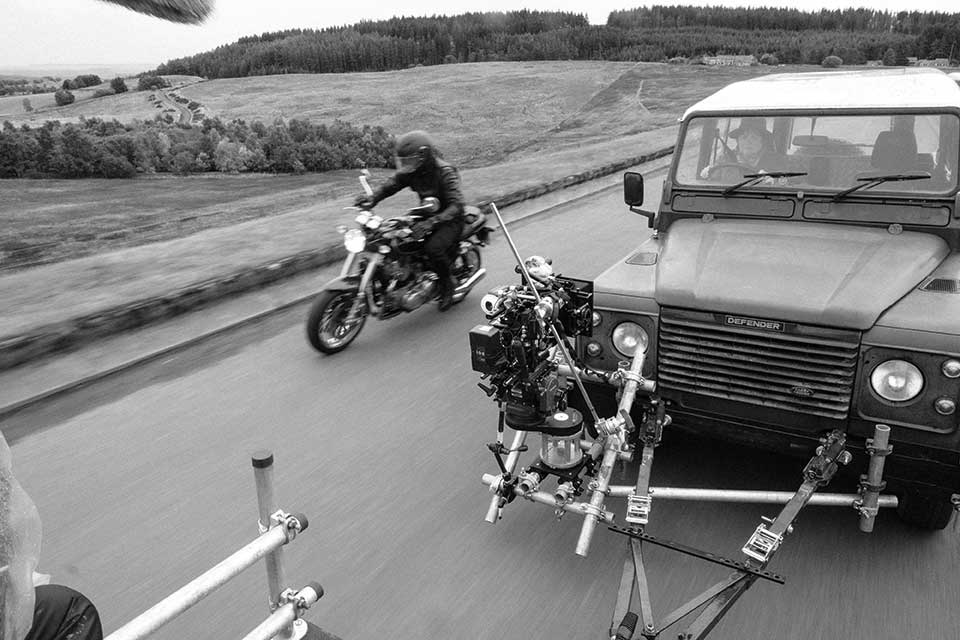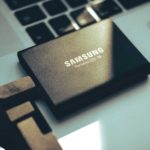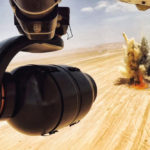
Darkwater
Posted on Jun 18, 2018 by Julian Mitchell

ITV’s popular police drama Vera has also been championed for its cinematography; the Darkwater episode in Season 8 is a great example
The production world is moving so fast that there are bound to be some casualties. Improvements in technology like LED lighting and new sensors impact on technique and craft but also new blood has new ways of doing things. So it was with Vera, a UK police drama series with feature-length episodes. Each series has four episodes shot with different DOPs and directors; similar to many other episodic shows in that respect.
Unfortunately, the new series of Vera and Shetland have attracted some internet trolling, especially from a group of retired BBC camera people. They actually wrote a letter to Ed Moore’s agent, the DOP of both, saying that he didn’t know how to frame anything and should go back to film school. We think that they should applaud this superb example of new style visual storytelling.
 Director Lee Haven Jones and DOP Ed Moore (left).
Director Lee Haven Jones and DOP Ed Moore (left).
You can tell that we at Definition are big fans of Vera and especially an episode from the latest block called Darkwater. DOP Ed Moore and Director Lee Haven Jones teamed up for this show and have gone on to shoot a few Shetland episodes, also for ITV in the UK. Vera isn’t as serialised as it used to be so episodes don’t need the same story thread entwined through each. This has encouraged this swapping out of talent with the safety net of the same colourist to match anything that needs it.
As a result, you get four individual little films, each with an identity of its own, something that was encouraged by the series producer. DOP Ed Moore thinks this approach is very refreshing and has unveiled new talent. “It’s become a kind of proving ground for new directors and DOPs as you aren’t held back by fitting a house style,” he says. “That said, of course there are only a number of ways to shoot the same sets. You watch a few episodes and get a sense of the style so you’re not wildly out.”
Director and DOP
Darkwater was the third job that Ed and Lee Haven Jones, the director, had done together and it’s obvious that they click. “We did the first Vera and just got on like a house on fire and then went on to work on Shetland and then back again for this episode of Vera. We doubled down on things that we wanted to try like the ‘mad’ framing or how to cover a scene and a whole lot more. The editor was also someone Lee works with a lot which is really important because they start to cut stuff on right on day one without the director there so you need an editor who is cutting the way the director would want it done. Especially for Lee and me as we like the wide, graphic shots and letting characters create their own blocking in the sense that if a character walks close to the camera then that forms a close-up rather than cut in another shot. If you get an editor who just puts in as many shots as possible, you’re kind of working against yourself. David Fisher, who cut the episode, enjoys holding on to shots for a long time which I think fits with our style.
 Brenda Blethyn as DCI Vera Stanhope and Kenny Doughty as DS Aiden Healy.
Brenda Blethyn as DCI Vera Stanhope and Kenny Doughty as DS Aiden Healy.
“We are all so used to watching content that’s made to such a high standard. Lee and I decided that we could take more chances and be more expressive about how stuff is composed and put together, otherwise programmes start to look the same and be cut together in similar ways. Everything will be on the same cameras with the same lenses and the same shot design.
“It’s good to try something new and we were often told to calm down by the producer. You can take it too far but it’s better to be overshooting the mark and coming back onto it rather than always doing the safest thing possible. We just pushed against the norm in a friendly way. We’re also very fond of frames within frames so you have a situation where you’re looking through something, like a door or window. I also try to make something as completely black as I can get in every shot and something as white as I can get, even if it’s a tiny little specular highlight, like the inky blackness inside a van and the doors open to a bright sky outside. It just helps draw the eye in.”
Northumberland Vista
For Vera the Northumberland countryside is of course also a character, which means plenty of location shooting and different shot designs, although Ed admits that he now artificially lights the drama less and less. “I am embracing more and more of what’s happening naturally. I’ll now take some of the light away and use negative fill to create more contrast: so big black cloths everywhere to try and get some shape back into the rooms. Brenda Blethyn, the actress who plays Vera, looks absolutely great in natural daylight. I struggled with her in an earlier episode as I tried to present her with an individual design but then that didn’t really cut together with other more aggressively lit shots in the same scene. If you can get her in a huge Northumbrian landscape on an overcast day with a little bit of fill to get under her hat, then she looks fantastic.
 Lee Haven Jones with the ALEXA Mini.
Lee Haven Jones with the ALEXA Mini.
“Now I just try and keep to a simple single source. This might be very big lights through windows but I back them off far enough so the light just naturally bounces off everything and ends up looking much more natural. I always say to directors that I’ll try and light from outside rooms because then the director and actors can work more freely in the location and they are not tripping over kit and other stuff. It works for me as well as inevitably as soon as you have lights in the room I feel you start to feel the source of it. It may seem a bit ‘lit’. You’re getting so close to lights, you’re feeling the change in brightness. Moving a foot towards a light that starts six feet from you is huge, whereas if you have a much bigger light 60 feet outside the window, that same one- or two-foot movement hardly makes a difference; it starts to feel a lot more believable.
 Using the ALEXA Mini made it easy to get into tight spots on location.
Using the ALEXA Mini made it easy to get into tight spots on location.
Scene analysis
Most of the days of shooting Vera are about six or seven pages but there are heavier days. “These tend to be nearer the end of the schedule as that’s when you shoot all the police station stuff and it’s slightly lighter when you’re out on location,” says Ed. Most of the shooting is of the location, to show off the magnificent scenery, but there are builds, like the wooden house in the initial first few establishing scenes of the Darkwater episode that need special attention. “That house was a build. On that day we had about four, four and a half pages to do because it was quite difficult to get to. You’re also chasing the light a little at that time of year, so you’re mostly going on instinct. I have found that even though you’ve got all the equipment there, it’s best not to be too prescriptive with the team in advance. What you actually do is just let them know about the big things in advance; if you know you’re going to need a 9000W HMI round the corner you let them know that because you can pre-rig all the cable and get that stuff in.
 Ed is a big fan of frames within frames.
Ed is a big fan of frames within frames.
“That whole scene plays almost entirely free from lighting. I did have to use a little bit of light as we were losing the light and there were rain effects on the windows and it sometimes helps to put a little bit of hard light back in. But now the digital cameras are so sensitive I always use Master Primes or some sort of lens that’s around T1.3. I find the shallow depth-of-field also helps on the wider shots. When you’re backed into a tight location, the fact that there’s a bit more focus fall-off on a Master Prime is great but mostly I use it just to suck in as much natural light as possible because otherwise stuff like a candlelight scene just doesn’t work. You end up having to supplement it with some sort of artificial light which just takes time. That opening shot of Vera in the wooden house is almost entirely natural light, candlelight and then maybe there is an M40 or some sort of HMI doing a little bit of something with the rain on the windows.
Vera Gear
 Brenda Blethyn as Vera, haring through the Northumbrian landscape with Alexa Mini on-board.
Brenda Blethyn as Vera, haring through the Northumbrian landscape with Alexa Mini on-board.
It’s because of the location-heavy shooting that Ed chose an ARRI ALEXA Mini (All camera and lighting was supplied by ProVision). “I try and make the cameras as light as possible, to remove as many barriers as possible to getting the camera into interesting places. It’s a friendly battle I wage with the camera assistants not to put more and more equipment on the camera. Sometimes you end up with the tail wagging the dog and any attempt to move the camera package takes ages. An ALEXA Mini just stripped down with a lens can be held over my head but an ALEXA Mini with batteries, transmitters, monitors, matte box and baseplate attached might as well be a full size camera.
“The fact that the cameras also have the built-in motorised ND is perhaps the main reason I prefer them to REDs. It’s this practical benefit of having three NDs. You can quickly press a button on the camera and it’s ready to go without matte boxes for sliding filters in and out.”
Ed’s love of using fast T1.3 glass does stress the focus pullers and Darkwater has plenty of beautiful pulls or walking into focus. “Focus pulling has evolved hugely and has moved on from people being very sniffy about putting down marks and using the old film way of doing things. To do it now with lenses like the T1.3, you have to be on monitors with peaking and maybe use new systems that have focus distance gauging sensors on the camera and other things like little sensors that you can place on the actors and track them. You just need as many tools as possible to grab sharps.”
Ed is a huge fan of the new types of gimbal like the MōVI M15 and the new Ronin 2. “I usually couple them with a set of wheels with wireless control that work with the gimbals. I find them so valuable especially in television with schedules the way they are. They are just as good as the expensive stabilised heads you use on a movie. Even if I’m just using them as a remote head so I can put the camera somewhere difficult. It’s so nice to say to a director that if he wants to do stuff on the move he can and you’re not going through the scheduling prep that schedules in a steadicam day.”
Another impressive thing about Darkwater is its limited but effective use of drone cinematography with Ed’s own DJI Inspire 2 craft. “I fly the drone myself,” he says. “A show like this, with the scale of the countryside, as with Shetland, lends itself so well to drone shooting. In the edit I think they got the balance just right; it doesn’t outstay its welcome. It gives a scene an extra breath.”
Ed is keen to point out that you have to think about the shots that perhaps aren’t the dialogue-heavy ones. “You might end up with lots and lots of shots of people talking and not enough of the interstitial shots, not necessarily drone shots but even just shots of people walking from one place to another. But in the pace of the story you find that you want them.”













